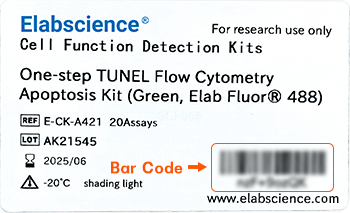CST3 Polyclonal Antibody (D-AB-10163L)

For research use only.
| Verified Samples |
Verified Samples in WB: Human Hep G2, Human PC-3, Human Caco-2, Mouse Kidney, Rat Kidney Verified Samples in IHC: Human kidney, Mouse kidney |
| Dilution | WB 1:500-1:1000, IHC 1:250-1:500 |
| Isotype | Rabbit IgG |
| Host | Rabbit |
| Reactivity | Human, Mouse, Rat |
| Applications | WB, IHC |
| Clonality | Polyclonal |
| Immunogen | Recombinant Human CST3 protein expressed by E.coli |
| Abbre | CST3 |
| Synonyms | ARMD11, Amyloid angiopathy and cerebral hemorrhage, CST3 protein, Cystatin 3, CystatinC, Epididymis secretory protein Li 2, Gamma trace, HCCAA, HEL S 2, Neuroendocrine basic polypeptide, Post gamma globulin, bA218C14.4, AD8 |
| Swissprot | |
| Calculated MW | 15 kDa |
| Observed MW |
15 kDa
Western blotting is a method for detecting a certain protein in a complex sample based on the specific binding of antigen and antibody. Different proteins can be divided into bands based on different mobility rates. The mobility is affected by many factors, which may cause the observed band size to be inconsistent with the expected size. The common factors include: 1. Post-translational modifications: For example, modifications such as glycosylation, phosphorylation, methylation, and acetylation will increase the molecular weight of the protein. 2. Splicing variants: Different expression patterns of various mRNA splicing bodies may produce proteins of different sizes. 3. Post-translational cleavage: Many proteins are first synthesized into precursor proteins and then cleaved to form active forms, such as COL1A1. 4. Relative charge: the composition of amino acids (the proportion of charged amino acids and uncharged amino acids). 5. Formation of multimers: For example, in protein dimer, strong interactions between proteins can cause the bands to be larger. However, the use of reducing conditions can usually avoid the formation of multimers. If a protein in a sample has different modified forms at the same time, multiple bands may be detected on the membrane. |
| Concentration | 1 mg/mL |
| Buffer | PBS with 0.05% Proclin300, 1% protective protein and 50% glycerol, pH7.4 |
| Purification Method | Antigen Affinity Purification |
| Research Areas | Tags & Cell Markers, Cell Biology, Stem Cells, Cardiovascular |
| Conjugation | Unconjugated |
| Storage | Store at -20°C Valid for 12 months. Avoid freeze / thaw cycles. |
| Shipping | The product is shipped with ice pack, upon receipt, store it immediately at the temperature recommended. |
| background | Cystatin C is a 13-kDa inhibitor of cysteine proteinases which is secreted by all cell types and is completely cleared from the organism through glomerular filtration,shown to be an early and sensitive biomarker of renal dysfunction. A mutation in Cystatin C has been associated with amyloid angiopathy. Expression of this protein in vascular wall smooth muscle cells is severely reduced in both atherosclerotic and aneurysmal aortic lesions,establishing its role in vascular disease. In addition,this protein has been shown to have an antimicrobial function,inhibiting the replication of herpes simplex virus. |
Other Clones
{{antibodyDetailsPage.numTotal}} Results
-
{{item.title}}
Citations ({{item.publications_count}}) Manual MSDS
Cat.No.:{{item.cat}}
{{index}} {{goods_show_value}}
Other Formats
{{formatDetailsPage.numTotal}} Results
Unconjugated
-
{{item.title}}
Citations ({{item.publications_count}}) Manual MSDS
Cat.No.:{{item.cat}}
{{index}} {{goods_show_value}}
-
IF:{{item.impact}}
Journal:{{item.journal}} ({{item.year}})
DOI:{{item.doi}}Reactivity:{{item.species}}
Sample Type:{{item.organization}}
-
Q{{(FAQpage.currentPage - 1)*pageSize+index+1}}:{{item.name}}





